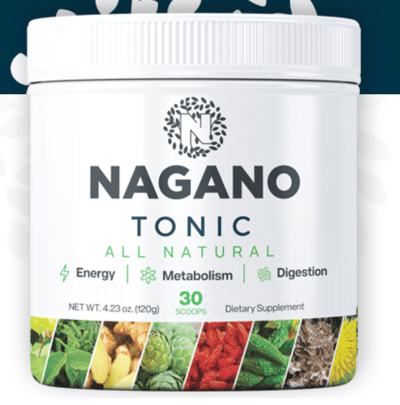The Ultimate Guide to Weight Loss: Science-Backed Strategies, Best Diets, and Effective Workouts for Lasting Results
1/29/20256 min read


Understanding Weight Loss: The Science Behind It
Weight loss is a complex physiological process primarily influenced by energy balance, metabolism, and hormonal regulation. At its core, weight loss occurs when a person consumes fewer calories than their body expends, creating what is known as a caloric deficit. This deficit compels the body to utilize stored energy, predominantly in the form of fat, leading to a reduction in body weight over time.
The metabolic rate plays a crucial role in how efficiently the body burns calories. It is influenced by various factors, including age, sex, muscle mass, and activity level. Individuals with a higher muscle mass typically have a higher basal metabolic rate, meaning they burn more calories at rest compared to those with a lower muscle mass. Metabolism encompasses not only the breakdown of food for energy but also the assembly of various biomolecules necessary for bodily functions.
In addition to caloric intake and metabolic rate, hormones significantly impact weight loss. Hormones such as insulin, leptin, and ghrelin are essential in regulating appetite and fat storage. Insulin, for instance, helps cells absorb glucose from the bloodstream and store fat, while leptin signals fullness to the brain, and ghrelin stimulates hunger. Disruption in these hormonal signals can contribute to challenges in weight management.
Despite numerous misconceptions surrounding weight loss, understanding the science behind it provides clarity. Many believe that drastic measures are required for significant weight loss; however, sustainable changes often yield more considerable long-term results. Achieving a healthy weight involves more than just initial dietary restrictions. It requires a balanced approach that encompasses regular physical activity, nutritional awareness, and behavioral changes that align with an individual's lifestyle.
Popular Diets: Which One is Right for You?
In considering weight loss, various diets have gained popularity, each offering unique approaches to eating and health. Among these, intermittent fasting, ketogenic, and paleo diets stand out due to their distinct scientific foundations and outcomes.
Intermittent fasting (IF) is not a diet in the traditional sense; rather, it is an eating pattern that alternates periods of eating and fasting. Research indicates that IF can promote weight loss by enhancing metabolic health and reducing calorie intake. It is particularly suitable for individuals who find restrictive dieting challenging. However, its effectiveness varies, and those with specific medical conditions should consult a healthcare professional before starting.
The ketogenic diet, or keto, emphasizes high-fat, low-carbohydrate intake to induce a state of ketosis, where the body burns fat for fuel. Numerous studies support its efficacy for rapid weight loss and improved blood sugar control. Despite its benefits, the keto diet may not be sustainable for everyone, and some individuals may experience adverse effects, particularly during the initial adaptation phase.
Another popular option is the paleo diet, which focuses on whole foods that mimic the diet of our hunter-gatherer ancestors. Rich in fruits, vegetables, lean meats, and nuts, the paleo diet can be beneficial for those looking to eliminate processed foods. While it promotes nutrient-dense eating, it can be challenging for individuals who prefer familiar, contemporary food choices.
When deciding which diet aligns best with individual needs, it is crucial to consider personal preferences, lifestyle, and any underlying health conditions. No single diet suits everyone, as each person's body responds differently. Therefore, thorough research and, if possible, consulting with a dietitian can help in making informed choices.
Exercise and Weight Loss: Effective Workouts That Really Work
Engaging in regular physical activity is a pivotal component of any weight loss journey. The effectiveness of workouts in achieving weight loss goals can vary significantly depending on the approach adopted. Among the most efficient workout types for weight loss are High-Intensity Interval Training (HIIT), strength training, and cardiovascular exercises.
HIIT involves alternating periods of intense activity with short recovery periods, which not only maximizes calorie burn during the workout but also increases post-exercise oxygen consumption. This leads to continued calorie burning long after the workout ends. Such bouts of high-energy exercise make HIIT an excellent choice for those seeking efficient weight loss solutions within a limited time frame.
On the other hand, strength training plays a crucial role in building lean muscle mass. Muscle tissue burns more calories than fat tissue, even at rest, thereby enhancing your metabolic rate. Incorporating strength training into your routine can lead to significant fat loss, as it helps reshape the body and maintain muscle while shedding weight. Compound exercises, such as squats and deadlifts, are particularly effective as they work multiple muscle groups simultaneously.
Cardiovascular exercise, encompassing activities like running, cycling, and swimming, remains a cornerstone of many weight loss strategies. These exercises elevate the heart rate, facilitating calorie expenditure and serving various cardiovascular health benefits. Consistency in these workouts is vital; establishing a routine can significantly influence long-term weight management.
To maximize fat burn, focus on varying workout intensity and incorporate both aerobic and anaerobic activities into your regimen. This balanced approach not only enhances physical fitness but also ensures a holistic method to fat loss and overall health improvement. Staying active and designing a well-rounded workout plan can yield lasting results and contribute significantly to maintaining weight over time.
Boosting Your Metabolism: Foods and Lifestyle Habits
Boosting metabolism is essential for effective weight management and sustainable weight loss. Several foods and lifestyle habits can contribute significantly to enhancing metabolic rate. One of the most effective dietary adjustments involves increasing protein intake. Protein-rich foods, such as lean meats, fish, eggs, and legumes, require more energy to digest compared to fats and carbohydrates, thus naturally boosting metabolism. Incorporating these foods into your daily meals can lead to an increase in calorie expenditure, supporting weight loss efforts.
Another beneficial food group in terms of metabolism is whole grains. Foods high in fiber, such as oats, quinoa, and brown rice, not only support digestion but also help maintain stable blood sugar levels. This balance can prevent energy crashes and support an active lifestyle. Additionally, green tea has gained attention for its potential metabolism-boosting properties due to its caffeine and catechin content, which may enhance fat oxidation and improve physical performance.
Spicy foods, including those featuring chili peppers, can also temporarily increase metabolic rate. The compound capsaicin found in these foods can elevate heart rate and promote calorie burning. Incorporating hot peppers into meals can easily infuse flavor while benefiting metabolism.
Lifestyle habits play a complementary role in metabolic enhancement. Ensuring adequate sleep is vital; poor sleep quality can disrupt hormonal balance, leading to increased appetite and reduced calorie burning. Hydration is another essential factor; drinking enough water can temporarily boost metabolism, particularly when consumed cold. Furthermore, managing stress is crucial, as high-stress levels may trigger hormonal changes that can lead to weight gain. Practicing relaxation techniques such as yoga, mindfulness, or deep-breathing exercises can positively influence metabolic rate.
Incorporating these foods and habits into your daily life requires practical adjustments. Plan meals ahead to include a variety of protein sources, whole grains, and an abundance of fruits and vegetables. Set hydration goals to maintain sufficient water intake and allocate time for quality sleep and stress-reduction practices. By integrating these strategies, individuals can effectively boost their metabolism and support their weight loss journey.
In summary, while some weight loss supplements, such as caffeine and green tea extract, demonstrate a scientific backing for their efficacy, others, like garcinia cambogia, require further exploration and caution. Ultimately, individuals should consult with healthcare professionals before incorporating any supplement, ensuring a safe and informed approach to their weight loss journey.
Your Delicious Path to Effortless Weight Loss and Vitality!
Nagano Tonic is a revolutionary elixir designed to make weight loss enjoyable and effective. Packed with a unique blend of exotic, high-quality nutrients, this powerful formula targets your metabolism, helping you burn fat, boost energy, and feel younger. With ingredients like Camu Camu, EGCG, Mangosteen, and Ashwagandha, Nagano Tonic supports healthy fat loss, curbs cravings, enhances mental clarity, and promotes smooth digestion. Why choose Nagano Tonic? It’s simple: just mix one scoop into your favorite beverage each morning and let the potent nutrients work their magic. Whether you’re looking to shed pounds, increase energy, or revitalize your overall health, Nagano Tonic makes achieving your dream body easier and more enjoyable than ever. Start your journey to a healthier, more vibrant you today!




Wellness
Your destination for Wellness, heath & Fitness, Your journey start here
Trust
contact@eleganbeautybrand@gmail.com
© 2024. All rights reserved.


